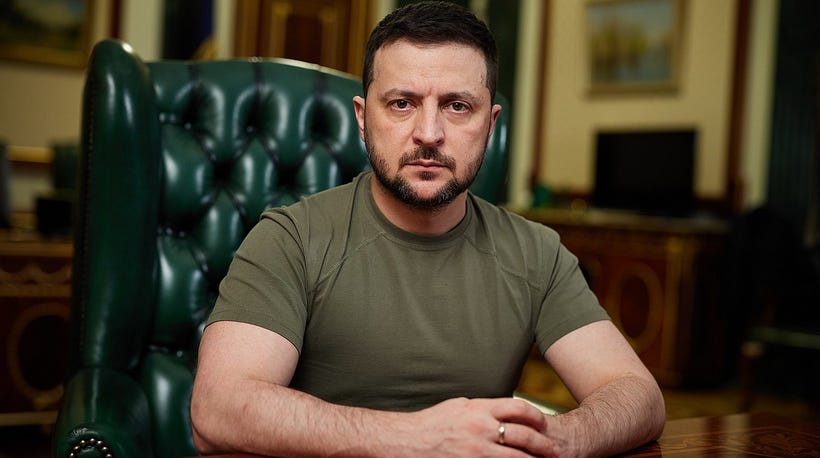Zelensky Accuses China of Producing Weapons in Russia Following Video of Captured Chinese Nationals Allegedly Fighting in Ukraine
The allegations highlight escalating tensions amid the Russia-Ukraine conflict. China and Russia’s “no limits” partnership, declared at the 2022 Beijing Winter Olympics, has deepened bilateral ties.
EUROPE — Ukrainian President Volodymyr Zelensky, during a press conference in Kyiv on April 10, 2025, stated that China is producing weapons, including gunpowder and artillery, on Russian territory. This claim follows Ukraine’s capture of two Chinese nationals fighting for Russia earlier this month.
According to Zelensky, "Two Chinese citizens who were fighting as part of the Russian army" were captured by the Ukrainian military on Ukrainian territory in the Donetsk region. He posted a video of one of the alleged Chinese citizens and said ID documentation, bank cards, and personal information were found in their possession:
Zelensky on April 8th: "Our military has captured two Chinese citizens who were fighting as part of the Russian army. This happened on Ukrainian territory—in the Donetsk region. Identification documents, bank cards, and personal data were found in their possession. We have information suggesting that there are many more Chinese citizens in the occupier's units than just these two.
We are currently verifying all the facts—intelligence, the Security Service of Ukraine, and the relevant units of the Armed Forces are working on it. I have instructed the Minister of Foreign Affairs of Ukraine to immediately contact Beijing and clarify how China intends to respond to this. Russia's involvement of China, along with other countries, whether directly or indirectly, in this war in Europe is a clear signal that Putin intends to do anything but end the war.
He is looking for ways to continue fighting. This definitely requires a response. A response from the United States, Europe, and all those around the world who want peace. The captured Chinese citizens are now in the custody of the Security Service of Ukraine. Relevant investigative and operational actions are ongoing."
The allegations highlight escalating tensions amid the Russia-Ukraine conflict. China and Russia’s “no limits” partnership, declared at the 2022 Beijing Winter Olympics, has deepened bilateral ties, though China maintains a public stance of neutrality.
In 2024, European intelligence disclosed that Chinese companies had been manufacturing long-range drones to be used in Russia's war against Ukraine, and that the Russian state-operated Almaz-Antey weapons manufacturer had been developing and testing Garpiya-3 (G3) drones within China with the help of local specialists using Chinese components. China's Foreign Ministry said at the time, however, that it was unaware of the project.
On April 8th, during a U.S. State Department Briefing, department spokeswoman Tammy Bruce was asked, "On Chinese involvement in the Ukraine-Russia war, President Zelenskyy today posted a video suggesting that they captured two Chinese nationals fighting in Ukraine on behalf of Russia. Does the Secretary have any comment on that?"
The spokeswoman replied, "Yeah", and added, "It’s disturbing with North Korea participating. It’s disturbing with the Chinese soldiers having been captured. We’re aware of those reports, that Ukraine captured two Chinese citizens fighting on behalf of Russia in Ukraine. China is a major enabler of Russia in the war in Ukraine."
She added, "China provides nearly 80 percent of the dual-use items Russia needs to sustain the war. Eighty percent comes from China. As President Trump has said, continued cooperation between these two nuclear powers will only further contribute to global instability and make the United States and other countries less safe, less secure, and less prosperous. I think that’s an understatement."
Provision of Dual-Use Technologies
Keep reading with a 7-day free trial
Subscribe to The Standeford Journal - News, Intel Analysis to keep reading this post and get 7 days of free access to the full post archives.






